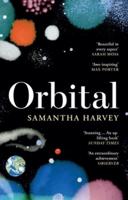Publisher's Synopsis
The story encompasses two journeys undertaken by the author. Firstly, the narrator travels in Tasmania by car shortly after the death of her husband. Her family and friends generally disapprove of her departure so soon after his funeral. Gradually as she travels round, her memories of Reg intrude on the day's events, as well as her observations of the locals. Nor can she escape from the heat of her family that rains down on her in the form of letters and phone calls. The denial and forgetting by Tasmanians of much of their history becomes a metaphor for her own attempts at denial and forgetting as well as the gaps in her sightseeing. The narrator tells of things forgotten; forgotten animals, the Tasmanian Tiger, forgotten people, the explorer Borchgrevink, forgotten sports, the game of Trugo. As well as the main island of Tasmania, she visits Maria Island and Bruny Island. Why the narrator's passion for islands? Are they a symbol of her own sense of isolation? The story of her travels is interspersed with her own fictions. These Tasmanian travels are interspersed with memoirs of a visit alone to Western Australia years before. Here she attempts to trace the histories of her parents and grandparents. Once again there are gaps, in the revelations about her grandfather, absences from court archives and from death records. Is one of her great uncles pictured in a photograph of a West Australian battalion about to embark for Gallipoli? Has her father read the book called 'In Darkest Western Australia' purchased from the bookshop at the Perth Art Gallery? From this he would have learned many interesting facts about Aborigines. Sadly these gaps in both journeys continue to haunt the narrator's life and perhaps give the reader pause for thought about his or her own history.

























